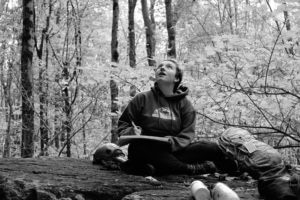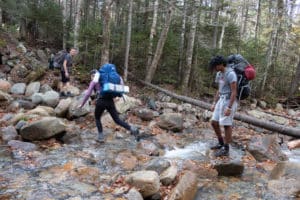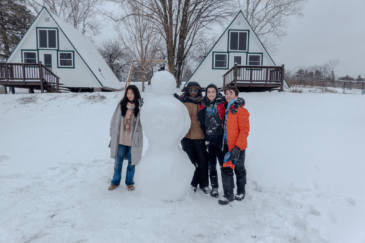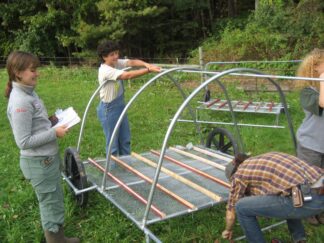Gap Reading Recommendations
February 1, 2023
3 min read

During these cold and snowy months, what’s better than a good book? At Gap at Glen Brook, we have a few foundational texts that we read, discuss, and revisit throughout the semester. They are the underpinning for our experiential, hands-on learning, and they provide good food for thought as we’re working on the farm or hiking down the trail on a backpacking trip. These books and articles all critically question the human-nature relationship, which is a big part of what we contemplate during Gap. Here are just three:
#1: Braiding Sweetgrass by Robin Wall Kimmerer
This 2013 non-fiction book is an essay collection by an Indigenous (Potowatomi) professor. Kimmerer, who is a botanist by trade, argues that Western biological science and Indigenous traditional ecological knowledge have things to teach each other. It’s a lovely foray into Potowatomi cultural traditions, scientific research, and the wisdom of the landscape. At Gap, an excerpt from Braiding Sweetgrass is the first reading we do. It sets the stage for the type of learning we’re about to engage in, which is both relational AND logical. For example, we might talk about the physiology of different trees in the forest at Glen Brook, then use different woods to make fire and see how they differ, and then spend solo contemplative time around said fires. We value different ways of knowing!

#2: Reading the Forested Landscape by Tom Wessels
Tom Wessels, who teaches at nearby Antioch University in Keene, wrote this incredible guide to New England forests. Ever wondered why all those stone walls and piles dot the landscape around Glen Brook? Curious about the giant old maple tree that’s five times bigger than the rest of the trees in our woods? With the help of this book, Gappers explore the historical and ecological clues on the land all around us. We start to challenge our assumptions of what was here before us, and understand our place in ecological time. This book will make you see the forest differently!
#3: The Trouble with Wilderness by William Cronon

It’s not a book, but this 1995 New York Times article by environmental historian William Cronon is a seminal work in the environmental movement. A highlight of the last Gap semester was sitting in the barn on a warm autumn evening, weaving cattail mats from fibers we had harvested, while we listened to the audiobook version of this article. (You can find it online!) Cronon seeks to break down the binary between “civilization” and “wilderness,” and explains our cultural myths around the concept of wilderness. This is a text we kept returning to, as we encountered these myths in the media and world around us. Read this when you’re ready for some deep thinking.
So there you have it – three readings that ground us during Gap at Glen Brook. Stories and the written word are a big part of the semester, from nightly read-aloud time on our wilderness trips, to weekly journaling, to discussions of these three texts and beyond. If you explore these, I hope you discover new questions and encounter new ideas. Happy reading!
-Tori Heller, Gap Program Director



